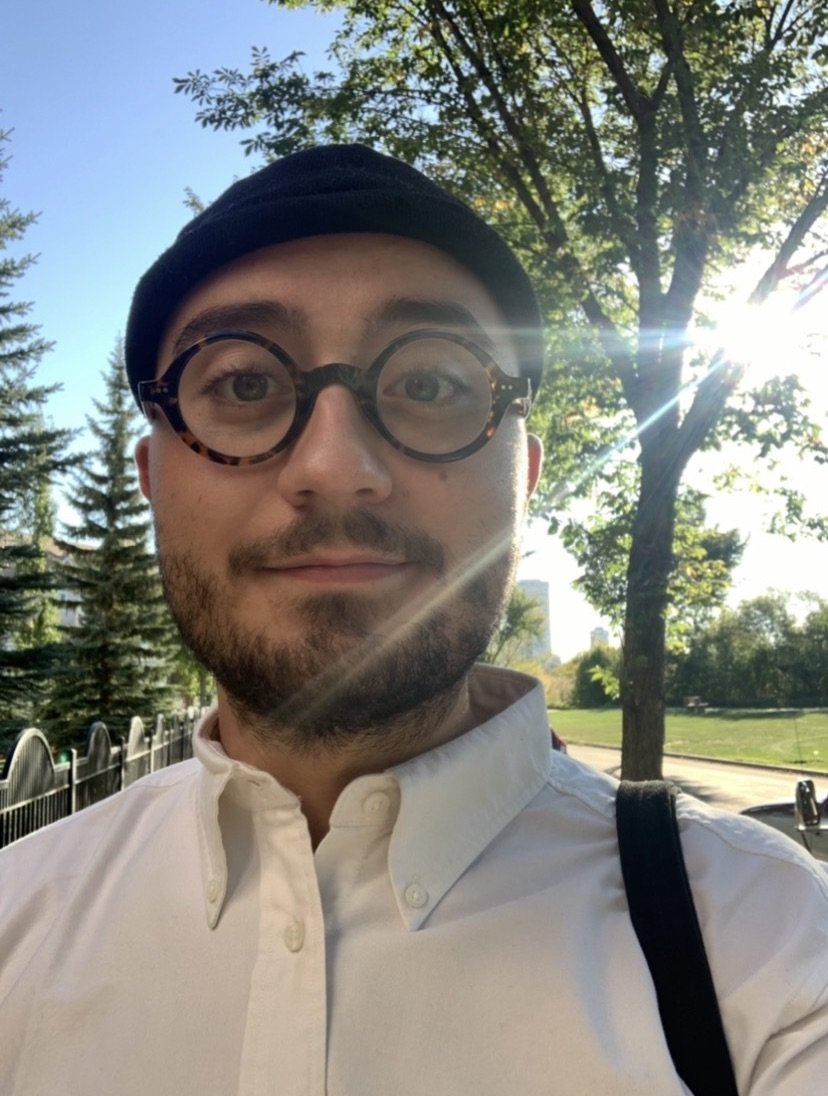Untitled Reflections | Nicholas Hertz
A response to Taryn Walker’s Healing Gestures
Since We Can’t Dance Together was the first work of Taryn’s that I had the pleasure of seeing in person. It was the summer of 2021, during The Works Art and Design Festival. It was a rainy weekday, making Churchill Square unusually empty for a summer afternoon. It was a relief because my mindset in the summer of 2021 was rife with fear of busy spaces, and in-person interactions. It was our second summer of accepting the new normal of living with the COVID-19 pandemic. It was a summer where anxieties continued to limit my social interactions; where dreams of travel, dancefloors, and crowded galleries were put on hold.
The work’s title instantly drew me in. I was in a state of longing. Longing for connection. Longing for freedom of movement, the freedom of closeness. I was immediately reminded of connections made on the dance floor. Yes, the dance floor, a place where pre-COVID, you could enjoy a fleeting, sweaty, and electric kindredness with strangers without the fear of getting sick, or making someone else sick. And so, there I was that rainy afternoon looking through the greenhouse glass of Taryn’s piece, longing for that sense of community.
The greenhouse creates a division of space between viewer and subject. The work was able to tug on that longing for connection by pulling the viewer through the locked glass structure, and transporting them into a thriving utopia free from the fear of the world as we knew it. Seeing the wax coated drawing and intermingling of diverse plant life within this closed system evokes the idea of harmony and togetherness, echoing the collective heartbeat of a dancefloor. Yet, I was still on the outside looking in, feeling that familiar longing for the way things were.
Taryn’s work goes beyond appealing to our desires for a utopian future of interconnectedness. Rather, works like The Breathing Wall and A Lesson in Listening encourage audiences to practice meditative listening. In doing so, they provide a path to connection that defies the physical. In both works, the incorporation of sound forces us to embody the space, through active listening. In the process, the environment becomes anthropomorphized, giving way to a fundamental shift in how we conceive of our relationship to the natural world, and each other.
In fall 2021, I had an opportunity to meet Taryn in person at the start of our respective residencies with SNAP. From this first meeting, it was clear Taryn embodies the themes which this work evokes. Taryn has an uncanny ability to listen, and hold space for vulnerability and care. While the pandemic has fundamentally altered the way we all connect, the themes of active listening and tenderness in Taryn’s work provide a path to human intimacy and togetherness unencumbered by physical constraints.
As I sit down to contemplate these works, in a time of great flux, their themes and lessons hold immense relevance. While we continue to find ourselves in a time of fear, division, longing, and uncertainty, these works encourage us all to pause, listen, and reflect. In that space lies the hope of reaching that utopic future we see just behind the glass of the greenhouse.
About the Author
Instagram: @nicholashertz
Nicholas Hertz (he/they) is a queer white-settler artist based Amiskwacîwâskahikan (Edmonton). Their work and research takes an interdisciplinary approach to exploring the liminal space between shame and desire, where he connects to the objectification of the queer body and the antropomorphizing of environments.
In 2019, they received their Bachelor of Fine Arts from the University of Alberta, where they were awarded the Livia Stoyke Foundation BFA Best of Show Award. Since then, their work has been featured in many exhibitions both locally and internationally.
Currently they are an Emerging Artist in Residence at SNAP, with a solo exhibition slated for May 2022. They are also a participant in the Love Lab residency at the Art Gallery of Mississauga, sponsored by Panasonic. They have previously served on the Board of Directors at SNAP, invigilated with the Art Gallery of Alberta, and taught programs with the Art Gallery of St. Albert.


